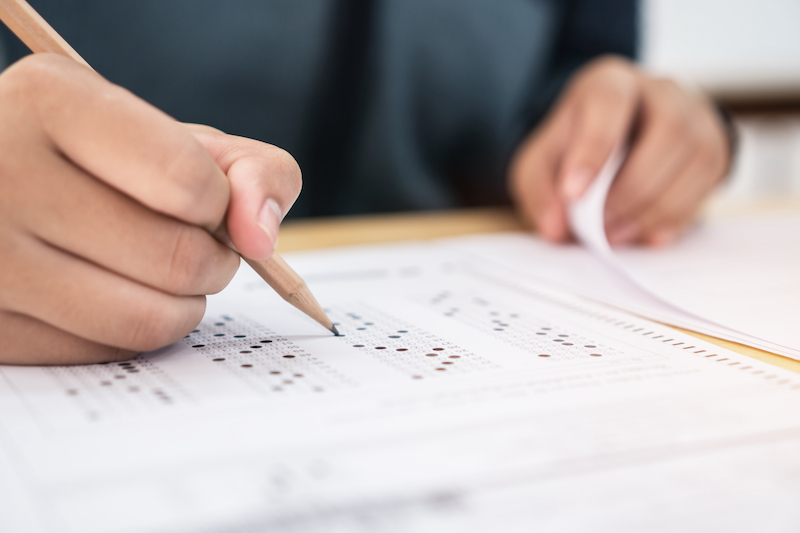Almost every time we meet with a family to discuss their learner’s executive functioning profile, we are asked this question: So what is working memory anyway? As a parent and educator, I would love to provide insight into working memory and how poor working memory can play a major role in learning throughout our lifespan.
What is Working Memory and How Does it Differ from Short-Term Memory & Long-Term Memory?
Working memory involves the retention of a small amount of information in a readily accessible form to be used in active cognitive tasks. Our working memory system is required for all planning, comprehension, reasoning, and problem-solving tasks. It differs from long term memory, which is information taken from short-term memory and stored away into long-lasting memories. Think back to your high school graduation, wedding date, or birth of your first child—these are long-term memories. Short-term memory and working memory are more closely related; it’s generally held that short term memory is only very briefly retained, while working memory is kept slightly longer to facilitate active tasks. For instance, when someone tells you a telephone number, your short-term memory picks it up long enough for you to write it down. By contrast, working memory is retained a bit longer: a series of plot points you are told about a show, a story you are listening to, a basic math problem used for problem solving. Relevant information is retained to engage your working memory in order to make sense of these types of new information.
Numerous studies, including this one published in The Educational Psychology Review, link the vital role of working memory to learning a new task and outcomes, “In order for information to enter long-term memory in a form that allows later retrieval, it first must be present in working memory in a suitable form.”
There are also other types of memory, such as explicit (those available to you consciously) and implicit (mostly subconscious) memory. Explicit memory can be further broken down into episodic and semantic memories, which deal with events and retaining important information about your surroundings.
How Working Memory Difficulties Relate to Executive Function
Working memory is one of the three overarching component sub skills of executive functioning. Simply put, working memory is your memory capacity to temporarily store information (think a placeholder or sticky note) for a number of seconds in order to focus your attention on using that same information for another use. Our memory ability is one of the cognitive processes important for reasoning and the guidance of decision making and behavior. Struggling to calculate mental math, remember a shopping list, follow multi-step directions or self-check one’s work are just a few daily activities that demonstrate how weak working memory can present and prevent one from reaching their learning potential.

How Strong Working Memory Affects Learning
Emerging readers and mathematicians are required to activate their working memory training on a daily basis in and out of the classroom. Whether it is recognizing a word pattern, vowel sound, number, basic math facts – whatever the sensory input is, learners must tap into their working memory and make connections to information stored in their long-term memory almost immediately upon receiving the input. Visual information and verbal working memory join forces to allow learners to fully process the communicative world around them. As we more fully understand how working memory deficits can affect different components of learning, it’s clear that memory skills are important even in young children.
Learners who struggle with language processing skills and their focus of attention, find it difficult to “keep things in mind” which is another way of saying, utilize their working memory. According to the International Dyslexia Association, “Approximately 10% of us have weak working memory; however, the estimates of the percentage of weak working memory in students with specific learning disorders, including dyslexia, ranges from 20 to 50 percent. Weak working memory is a core difficulty for students with ADHD, Inattentive Type.” This is primarily due to the fact that information must pass through their prefrontal cortex, where our central executive functioning skills such as attention and regulation are housed, before it can reach the areas in the brain that they need to fully access information. So, if the front of their brain is unable to perform, then it serves as a block to the rest of the brain.
Working Memory Load and Anxiety
Anxiety can impact one’s memory skills as well. I like to refer to this as the “stress fog effect”—the anxiety and stress that learners experience is a double whammy because not only are their brains wired differently to start, they also have to discover methods to prevent their increase in anxiety from gating the rest of the pathways in their brain from functioning. As learners reach what can feel like a capacity limit to their working memory load, anxiety rises and their cognitive abilities may begin to decrease. Looking at this cycle of working memory difficulties and anxiety, it is easy to see how the two go hand in hand and compound difficulties in different aspects of learning.

Attention Deficit Hyperactivity Disorder (ADHD) and Memory
According to research, children with ADHD have more working memory challenges compared to their neurotypical peers. ADDitude.com expands on this link, “Many experts today argue that attention deficit hyperactivity disorder is not, at its core, an attention problem, but rather a self-regulation problem exacerbated by weak working memory.” Dr. Russell Barkley of the Virginia Commonwealth University Medical Center, refers to working memory as the GPS for the brain—but also points out how it is disproportionately weaker in people with ADHD.
Strategies to Improve Memory
Although there is no easy fix for working memory weaknesses, educators and caregivers can teach strategies to support learners in discovering how they learn best (metacognitively). Examples include learning how to: bullet point important details, jot down thoughts on sticky notes within text, maximize various to-do items in a list, use airwriting as a technique to learn math facts and word patterns, chunk information into sections and assignments into manageable parts, and list the steps for more complex tasks to execute—to name a few! We recognize that working memory is a somewhat abstract concept, so please contact us if you are curious to learn more or have a question about a specific learner or strategy!
Learnfully provides executive function coaching and intervention, which target critical working memory skills. Fill out the form there, or call us at 650-459-5900 to learn more.
If you suspect your learner has a learning disability or if they have already been diagnosed, Learnfully can help them reach their full potential. Our SPARK assessment will identify your learner’s strengths and areas to work on and create a comprehensive plan tailored to your learner. To stay up to date on all of our events and offerings, subscribe to our newsletter!












